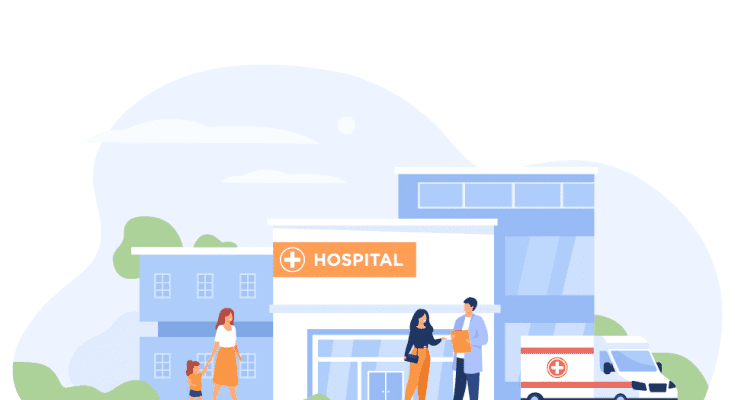Definition and purpose of a hospital visitor management system.
A hospital visitor management system is a tool for controlling the flow of visitors in and out of a hospital. It provides security, accountability and safety to both visitors and staff alike by monitoring who comes into the facility. This article will discuss the definition and purpose of a hospital visitor management system, as well as its benefits when implemented in hospitals.
Definition and Purpose of Hospital Visitor Management System
A hospital visitor management system such as visitor management system in Singapore is designed to provide an organized way for tracking visitors at a healthcare facility. It helps maintain orderliness by providing information on who has visited, for what purpose, when they left, etc. The system can be used to identify potential threats that could lead to harm or disruption within the facility by alerting security personnel if an unauthorized person tries to gain access or if someone suspicious is spotted on video surveillance systems. Additionally, it can also help with patient privacy rules such as HIPAA regulations by keeping unauthorized people from visiting patients without permission or identification.
Benefits of Implementing Visitor Management System in Hospitals
Hospitals that have implemented a visitor management system have seen numerous benefits including improved safety and security measures for staff members, reduced wait times during peak visitation hours due to efficient tracking capabilities which enable quicker check-ins/outs
Planning for Hospital Visitor Management System
Hospitals need to ensure the safety and security of their staff, patients, and visitors. To do this effectively, hospitals must have an efficient visitor management system in place. Planning for such a system can be complex and requires research, evaluation of available systems, cost-benefit analysis and budgeting considerations, and determining the scope and features needed for the system.
Research & Evaluation of available systems: The first step in planning for a hospital visitor management system is to research the various options available on the market today. It is important to evaluate each option based on its features as well as cost to determine which one will best meet your needs. Be sure to consider factors such as ease-of-use, scalability, integration with existing technology infrastructure (such as databases or networking), security measures such as biometric authentication or two factor authentication (2FA), reporting capabilities (such as tracking frequency of visits by individuals), customization options (such as customizing login screens or fields), customer support services offered by vendors/manufacturers ,and other features that may be important depending on your specific requirements.
Implementation Process for Hospital Visitor Management System
Hospital Visitor Management System (VMS) is an effective way to improve the overall patient experience, while simultaneously increasing security. To ensure the successful implementation of a VMS, it’s important to consider certain steps in the process. These include training staff on how to use the system, setting up hardware, software and security protocols, and testing for functionality before going live.
A crucial first step in installing a VMS is training all existing hospital staff on how to use it properly. This includes familiarizing them with basic user interface elements such as menus and buttons, as well as more advanced features such as data entry fields and reporting functions. It’s also important to ensure that all staff have an understanding of processes related to visitor registration and tracking—for example, when visitors need additional information or must enter specific information into the system in order for their visit to be completed successfully.
Once staff are trained on how to use a VMS effectively, it’s time for the next step: setting up hardware components such as computers or tablets with necessary software installed on them in order for visitors’ information can be entered accurately into the system; implementing network connections; configuring security protocols;and ensuring that all equipment.
Maintenance & Upgrades to Hospital Visitor Management System
As more and more hospitals adopt digital visitor management systems, it is important to consider the importance of maintenance and upgrades. In order to ensure that visitors have a safe, secure, and efficient experience when visiting their local hospital, proper maintenance and upgrades must be performed regularly. In this article we will discuss three key aspects of maintaining a successful visitor management system: scheduling regular maintenance checks on hardware and software components; monitoring user feedback to help inform future upgrades; and establishing procedures for handling technical issues.
A. Scheduling Regular Maintenance Checks on Hardware & Software Components
It is essential that regular maintenance checks are conducted on all hardware components (e.g., computers, printers) as well as software components (e.g., operating systems) used in the visitor management system so that any potential problems can be identified before they become serious issues. These checks should include ensuring that all necessary updates are installed in a timely manner as well as testing for virus protection measures so malicious programs do not infect the system or its users’ data.
B . Monitoring User Feedback to Help Inform Future Upgrades
In order to identify areas of improvement for future upgrades, it is important to monitor user feedback from those who use the system daily.
Conclusion
There are several risks associated with visitor management systems that are outdated and poorly managed. Compliance issues or security lapses caused by an out-of-date platform can be extremely costly. It’s time to rethink the entire process and prioritize the visitor management system.



